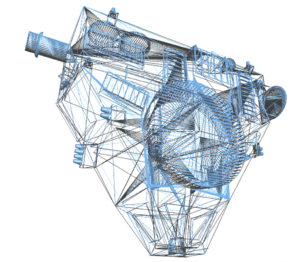
The above is an image of a design provided by NASA for 3-d printing of the New Horizons space vehicle which flew by Pluto in 2015. For the link to this design, see page 9 of this article.
Your product can be one of a kind, and it can be cheap.
VIDEO 4 min. 38 sec.: There is a “maker” in all of us. Makers are realizing their ideas today through a process which simplifies and shortens the manufacturing and design of prototypes: additive manufacturing, commonly known as 3D printing.
In theory, your 3D printed prototype could have a scientific, medical, technological, or artistic application. It could be made of any material, and be simple or complex.
The process of 3D printing is basically:
- Sketch or scan a design, structure, or object into a computer.
- Send the digital result to the 3D printer.
- The 3D printer extrudes a liquid through a heated nozzle, drop by drop, to render the object in 3D on a flat surface.
As you read through this article, you will see that the extruded substance could be:
- food,
- plastic,
- resins,
- metals, or even
- biological cells in a gelatinous base.
As an initial example, a plastic 3D printed product can be as basic as a child’s sand bucket. It can be a statue of oneself, digitally photographed from various angles and deposited as bits of plastic on a small platform within an hour. It could have moving parts which are 3D printed into place, bypassing an assembly stage involved in traditional methods of manufacturing, such as this quadruple bearing structure, wherein operable ball bearings were 3D printed in place without need for assembly.
Design: See examples and download this design here.
Visit the next page to see how a group of startups offered 3D services to New York consumers in 2013.



